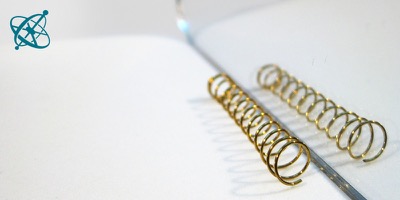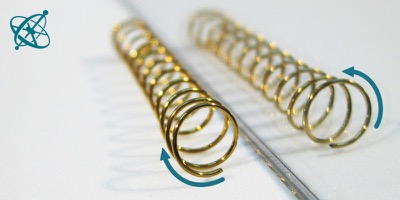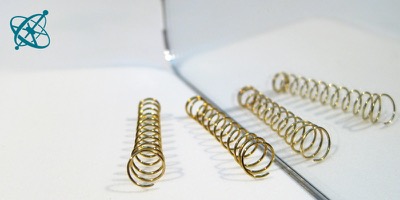 www.sciensation.org | Ciênsação hands-on experiments are published as Open Educational resources under a Creative Commons Attribution-ShareAlike 4.0 International License.
www.sciensation.org | Ciênsação hands-on experiments are published as Open Educational resources under a Creative Commons Attribution-ShareAlike 4.0 International License.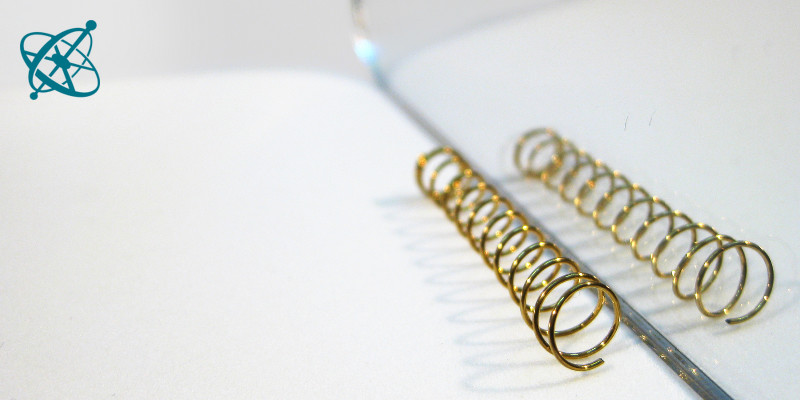
Is the mirror image just a duplicate of the original?
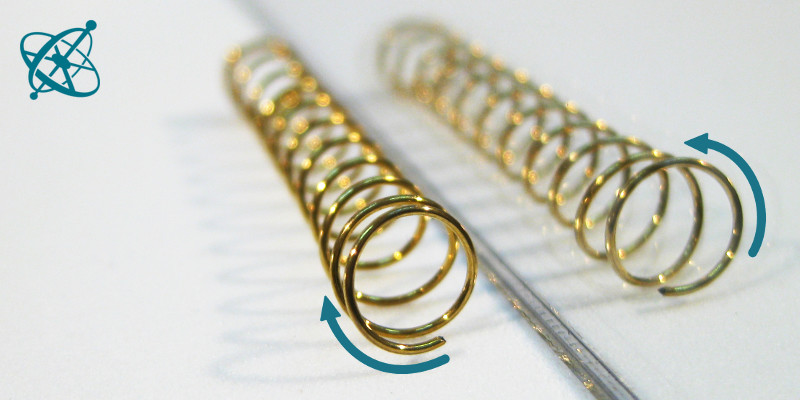
Not quite, there is a significant difference.
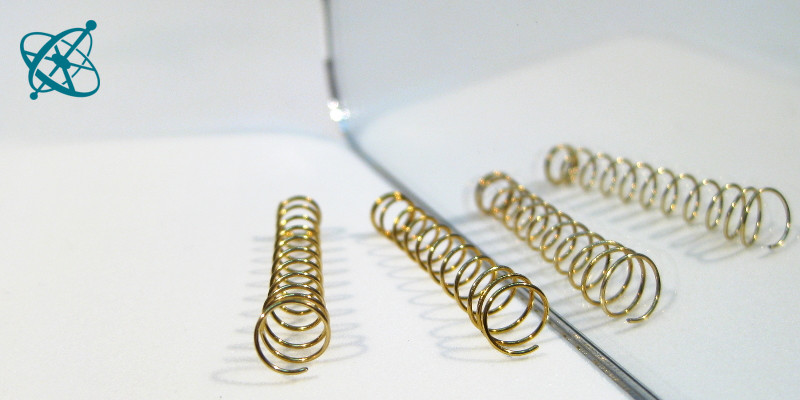
Try to arrange a second spring so that it matches the mirror image of the first.
Chirality
Chirality is important in physics, maths, biology and especially in chemistry. Although many students manage easily to memorize the definition, it usually takes more than words to comprehend this property and its consequences in 3 dimensions.
Chirality means that an object (e.g. a molecule) and its mirror image are different and cannot be superimposed however you rotate them.
Take two identical springs from ball-point pens and compare one of them with its mirror image.
1. Can you arrange the two springs in a way that the mirror image of the first matches exactly the second spring?
Does a helix have a symmetry plane?
› No (see also 'Mirror symmetry').
Does the rotation sense (clockwise or anti-clockwise) of a helix change if you look at it from the front or the back end?
› No.
Is the rotation sense of a helix and its mirror image identical?
› No.
While the rotational sense in a helix remains the same independent from which side you look at it, the mirror image has the exact opposite sense. These properties distinguish 'optical isomers': While one type of molecule turns the polarization plane of linear polarized light clockwise, the isomer (chiral mirror image) turns it counterclockwise.
This short activity is ideally followed by experiments showing the optical activity of sugar and how it is used e.g. in the beverage industry to determine the sugar concentration of juices.
